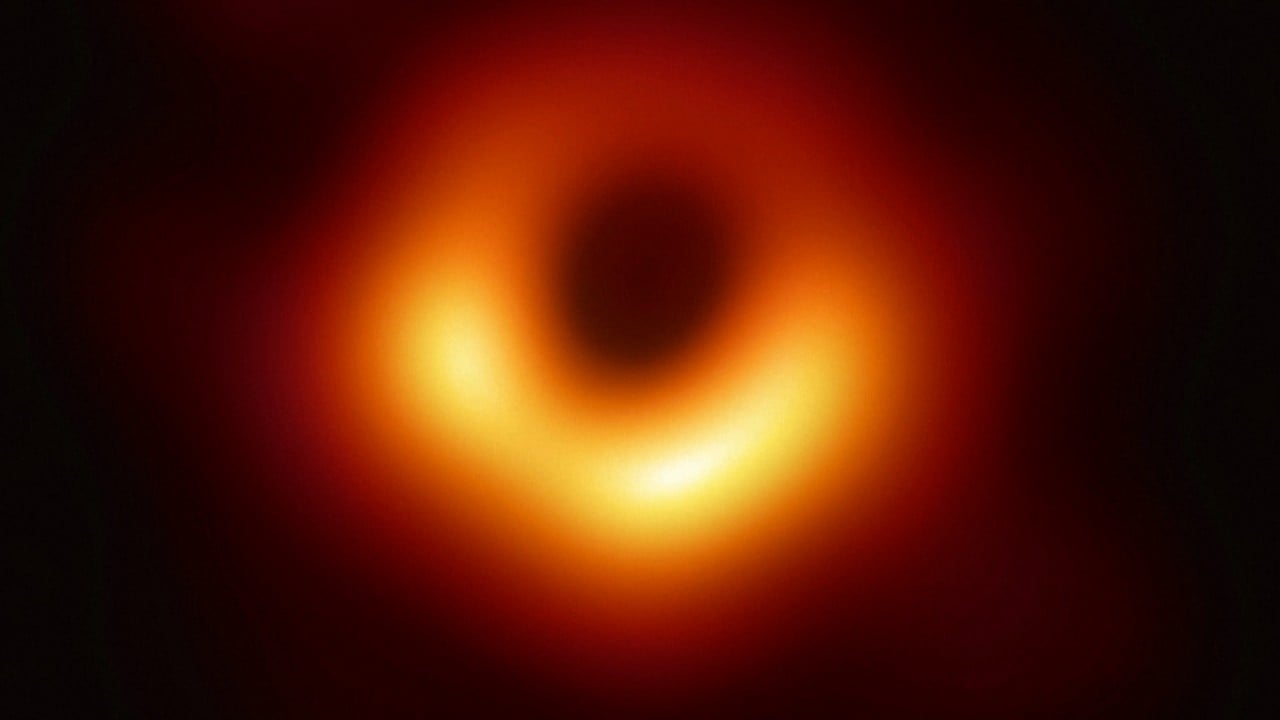For the first time, a Chinese-led study has shown direct evidence of the immense influence a supermassive black hole exerts over the life and death of its home galaxy.
By examining 69 nearby galaxies, researchers from China and France found that the black hole at the centre of a galaxy could warm up surrounding cold gas and prevent it from condensing and forming new stars.
“Cold gas is the essential raw material for star formation. Our research shows that the larger the black hole, the less cold gas there is in the galaxy,” said lead researcher Wang Tao from Nanjing University.
The study may explain why some galaxies continued to grow for a long time while others went passive and dormant, the researchers reported in this week’s Nature magazine.
David Elbaz, a co-author from the Université Paris-Saclay, compared this phenomenon to placing an upside-down glass over a candle.
“After a few seconds, the candle goes out for a lack of air. Likewise, the black hole prevents the galaxy from continuing to light up new stars,” Elbaz said.
Galaxies are the fundamental building blocks of the universe. Each galaxy typically contains millions to trillions of stars, along with interstellar gas, dust and a supermassive black hole dwelling at its centre.
Scientists have long known that the mass of the supermassive black hole is closely related to the mass of the stars in a given galaxy, Elbaz told the South China Morning Post.
“The black hole is about one-thousandth the mass of all the stars in the galactic bulge – a region where star formation has long since ceased,” he said.
Astronomers proposed that the black hole might somehow prevent the formation of new stars but until now there had been no direct evidence to support this theory.
The new study focused on a specific type of gas called atomic hydrogen, which is the main component of the interstellar medium and a key ingredient in star formation.
By analysing 69 galaxies in our nearby universe, the researchers found the amount of atomic hydrogen in a galaxy was strongly correlated with the mass of the black hole at the galactic centre, rather than with other factors, such as the total number of stars or the size of the galactic bulge.
“Once the influence of black hole mass was excluded, the correlation between the cold gas content and other parameters turned out to be very weak. This further indicates that black hole mass is the most important physical parameter determining the amount of cold gas in a galaxy,” Wang told China Science Daily.
There were two possible interpretations for such a finding, according to Elbaz. First, the black hole may eject gas out of the galaxy – but this scenario faces a problem. “We see many galaxies going through star formation despite having an active black hole in them,” he said.
The second interpretation is that the jets from an active black hole can heat up the surrounding intergalactic gas and prevent it from feeding the galaxy. This phenomenon is called galaxy starvation.
Elbaz preferred the latter – a solution that has been increasingly favoured by numerical simulations in cosmology research.
The new study eventually provided a direct observation to validate this hypothesis, Elbaz said. Although the finding came as a surprise to him after past studies all failed to find direct evidence, it does “provide a logical explanation for the behaviour of galaxies that we observe in the universe”, he said.
Next up, the team plans to use data from China’s FAST radio telescope as well as the coming Square Kilometre Array in South Africa and Australia to test their findings with more distant and smaller galaxies.
“This will help us refine our conclusion and confirm its general applicability,” Wang said.




